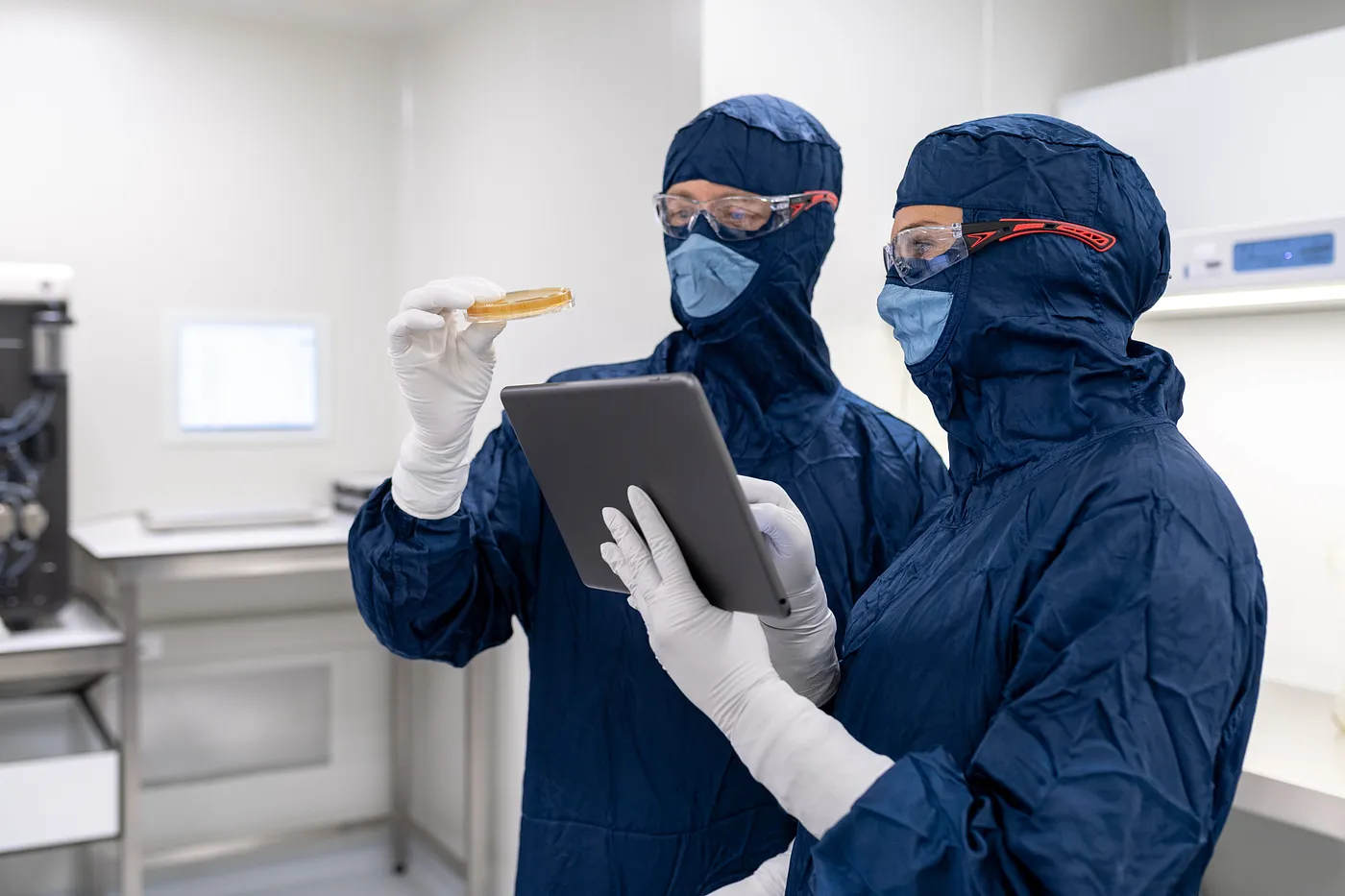No Contest: Small Pharma Innovates Better than Big Pharma

Photo by Toon Lambrechts on Unsplash
Executive Summary
By far, the United States has the highest prescription drug prices in the world. Aggressive price increases by large drug manufacturers in the U.S. market widen the price gap every year.
The drug manufacturers who defend this practice argue that any attempt to mitigate these high prices will “harm innovation.” But they make this claim without establishing the relationship of “Big Pharma” profits to innovation and to improvements in public health. Indeed, despite the claim that profits from large companies fuel innovation, high-value drug development emerges most often from unprofitable startup companies with fewer resources and substantially smaller revenue streams.
In this paper, we undertook a detailed review of 428 FDA drug approvals and financial data from more than 4,000 pharmaceutical companies to examine trends in drug innovation between small and large pharmaceutical companies. We found the following:
- The majority of new drug development now takes place at startups with little to no commercial revenue. Contrary to the claim that raising prices on old drugs drives innovation, large pharmaceutical companies, generally defined as those with $10 billion or more in annual sales, rarely discover new drugs. Large companies have bureaucratic research and development (R&D) processes, in which scientists have comparatively little incentive to innovate. Researchers at emerging firms, on the other hand, may be driven to innovate by the remunerative model such firms use — i.e,. researchers share more fully in the economic rewards of successful drug development. Therefore, the majority of new drugs are now discovered and brought into human clinical trials by emerging startup companies — defined as those with $500 million or less in annual sales, or less than $200 million in annual R&D spending — funded by venture capital and hedge funds. In 2020, early-stage, unprofitable companies brought nearly 62 percent of new industry-originated drugs approved by the FDA to the clinic, with no less than 54 percent of drugs brought to the clinic by emerging firms in each of the last seven years (2016–2022).
- Emerging companies are taking their innovations to market without the help of Big Pharma. Large companies that fail to discover drugs in-house often assert that the venture capital used for drug innovation would disappear if large companies sold drugs at lower prices. This claim assumes large companies will purchase the rights to sell drugs developed by emerging companies, whether through licensing agreements to sell on the emerging company’s behalf or by acquiring the emerging company altogether. But this model of drug development, which peaked in the 2010s, is quickly fading as emerging companies increasingly bring new innovations to market on their own. Our analysis found that, in 2013, 23 percent of emerging companies that originated novel drugs retained marketing rights to those drugs through the entire FDA approval process. By 2022, that percentage had more than tripled, to 75 percent. In fact, some drugs originated by profitable companies are now licensed to emerging companies to sell. Of the 17 drugs originated by established companies in 2022, four are currently marketed by emerging companies.
- Emerging companies innovate more while earning less revenue and spending less on R&D. Startups rely on venture capital to develop new and innovative drugs with a higher level of accountability than large companies, spending less per innovative drug developed than large, inefficient companies.
Our analysis shows the pharmaceutical industry is rapidly evolving in favor of agile startups that embrace new ways of innovating and are free of the bureaucratic processes that plague larger companies. In practical terms, emerging companies are developing new medicines with fewer resources, all while charging patients less.
Our analysis found that, in 2013, 23 percent of emerging companies that originated novel drugs retained marketing rights to those drugs through the entire FDA approval process. By 2022, that percentage had more than tripled, to 75 percent.
As we have discussed previously, the reason for this efficiency is that the most talented biopharmaceutical scientists gravitate toward startups. At biotech and pharma startups, a top scientist will receive stock options, which can translate into substantial wealth if the company successfully takes a drug candidate through the FDA approval process. These economic opportunities are largely absent at large companies. Furthermore, bureaucratic decisionmaking at large companies creates diseconomies of scale, in which promising drugs are abandoned because they do not fit into a larger corporate strategy or existing product lines.
Contrary to their rhetoric, large pharmaceutical companies often fail to turn their enormous profits into innovative R&D. Instead, they acquire startups where the innovation has already taken place. In most cases, these smaller companies would have been able to gain FDA approval for their drug candidates if they had remained standalone companies.
The pharmaceutical industry’s increasing reliance on emerging companies with smaller R&D budgets shows that policies to curb high drug prices — especially policies that target excessive price increases on older drugs sold by large firms — are unlikely to harm innovation. Furthermore, coupling such policies with those designed to reduce the costs and risks of drug development, such as allowing more drugs to come to market after successful Phase II studies, can give us the best of both worlds: a more innovative biopharma ecosystem and a more affordable one.
Background
The United States leads the world in pharmaceutical research and investment, benefiting millions of Americans and many more patients across the world. Previously devastating diseases — including HIV, Hepatitis C, diabetes, and many childhood maladies — are now effectively managed or have been eradicated altogether through the miracle of pharmaceutical innovation.
But innovation comes at a cost. For decades, drug companies have justified raising prices to fund innovation. In fact, some policymakers believe charging higher drug prices on Americans is a fundamental feature of the United States health care system. Together with drug company CEOs, they argue that high prices on today’s FDA-approved drugs are necessary to fund R&D for the miracle drugs of tomorrow, and ensure that Americans get access to the newest treatments first.
Other proponents of higher drug prices argue that because the percentage of total health care spending on prescription drugs is low compared to other services, high drug prices are not a legitimate policy concern. For example, in 2022, prescription drugs purchased at retail pharmacies accounted for nine percent of health care spending in the United States — far less than spending on hospital care (30 percent) and physician services (20 percent). However, this measure of drug spending excludes medicines dispensed in hospital and physician settings as hospital and physician care, respectively, distorting the calculation. For the non-elderly with private health insurance, prescription drugs represent 22% of health insurance costs.
Remarkably, the United States leads the world with 91 percent of its prescriptions dispensed as low-cost generics. But the remaining nine percent of drugs dispensed as brand-name drugs account for more than 84 percent of total drug spending, and their costs can be devastating to the millions of Americans who rely on new treatments with no generic alternative.
Drug prices also affect far more people than those who actually take the high cost drugs. Many families struggle further to afford prescriptions because of high cost sharing on branded drugs. Moreover, high drug spending in Medicare will drive up government deficits and debt that future generations of taxpayers will have to pay.
Based on per capita spending on prescription drugs, it is clear that U.S. consumers pay far more for prescription drugs than their counterparts spend in other countries. According to FREOPP’s World Index of Healthcare Innovation, Americans pay 2.3 times higher than the average among peer countries, even when accounting for a high substitution rate for generics.
The high cost of prescription drugs represents an economic burden for many Americans, particularly for those below median income and wealth. But this burden compounds when the high cost delays access to medication. One study found that both absolute and relative financial burdens correlated positively with delayed access to medication, but that the association of relative financial burdens was twice as high. In other words, the amount spent is less important than the share of the medication cost relative to income. Lower-income Americans are less likely to obtain the treatments they need when they need them.
Previous efforts to lower drug prices
Public polling consistently shows near unanimous agreement that prescription drug prices are too high in the United States and that the federal government should address the problem. For decades, the pharmaceutical industry thwarted one congressional drug price reform proposal after another, arguing that forcibly reducing drug prices would decrease investment in R&D and, in so doing, reduce the number of life-saving treatments available to Americans.
Congress successfully reduced high drug prices in 1984 with the passage of the Drug Price Competition and Patent Term Restoration Act, better known as the Hatch-Waxman Act.
Hatch-Waxman increased competition and lowered drug prices by establishing a pathway for companies to develop generic drugs. Among other things, the law required drug makers to list all patents related to the drug in the FDA’s Approved Drug Products with Therapeutic Equivalence Evaluations, otherwise known as the “Orange Book.” As a result, companies could develop generic versions without infringing on the branded manufacturer’s patents. Hatch-Waxman also created clear procedures for patent disputes. Notably, the law granted generic drug manufacturers five years of marketing exclusivity for new chemical entities — also known as small molecule drugs — approved by the FDA.
Following the passage of Hatch-Waxman, the use of less-expensive generics grew steadily, bringing important treatments to millions of Americans who previously could not afford them.
But over time, the drug industry found methods to protect their revenue streams. One important way was the industry’s lobbying for the Biologics Price Competition and Innovation Act (BPCI). Passed as part of the comprehensive Affordable Care Act in 2009, the BPCI created a pathway to biosimilar development for biologics, similar to how Hatch-Waxman created a path to generics for small molecule drugs. However, unlike the five-year FDA marketing exclusivity granted to small molecule drugs under Hatch-Waxman, the BPCI granted 12 years of exclusivity for biologic molecules. In addition, biologic manufacturers were not required to list applicable patents in the FDA’s “Purple Book,” making it nearly impossible for a biosimilar manufacturer to avoid alleged infringement of one or more patents asserted by the branded manufacturer.
The longer monopoly granted to drug companies under BPCI enabled biologic drug spending to surge in the United States. Since 2015, while spending on small molecule drugs fell in nominal and real terms, spending on biologic drugs over the same time period has nearly doubled.
Policymakers had ignored the rise in overall prescription drug spending for more than a decade since the ACA’s passage. That changed in 2022, when Congress enacted the Inflation Reduction Act (IRA).
Beginning in 2023, the IRA requires drug companies to pay rebates to Medicare if they raise prices on drugs faster than inflation and limits monthly out-of-pocket costs for insulin to $35. In 2024, the law caps out-of-pocket spending for Medicare Part D enrollees. Most important for this study’s purposes, the IRA requires the federal government to negotiate prices for certain high-spend drugs in Medicare. Such negotiated prices begin for Part D drugs — drugs sold at a pharmacy — in 2026, while eligible Part B drugs — drugs administered in a physician office setting — will be sold at negotiated prices beginning in 2028.
The Congressional Budget Office estimates these prescription drug provisions will reduce the federal deficit by $237 billion over 10 years (2022–2031). Drug manufacturers lobbied intensely against the law, arguing the provisions would reduce investment in new drug development. Several manufacturers whose drugs were selected for the first round of negotiations are suing to block the law, arguing the law’s provisions “represent an unconstitutional taking of pharmaceutical manufacturers’ private property” by forcing drug companies to sell at much lower prices.
Case study: Emerging companies versus Big Pharma
The tension between the American public’s demands for both affordable drugs and cutting-edge therapies is at the heart of the drug pricing debate. Patent law, the lengthy and costly FDA drug approval process, and payer reimbursement of prescriptions influence the cost of drugs. These policies also affect incentives to innovate.
This study seeks to leverage drug approval and company financial data to help policymakers assess the potential effects drug pricing policies may have on innovation. Specifically, the study focuses on revenue generation, R&D spending, and drug innovation at large companies versus smaller emerging companies. For our purposes, emerging companies are startups with less than $500 million in annual revenue or $200 million in annual R&D spending.
Ultimately, the study will help answer whether the pharmaceutical industry in toto would continue to innovate if policymakers enact laws to reduce drug prices.
Methods. To answer the questions posed by this study, we gathered and analyzed two types of data.
In the first part of the study, we cataloged novel drug approvals between 2013–2022 from the FDA’s website. Next, we gathered information on each drug approved from Adis-Springer, via Bloomberg Terminal’s drug explorer module. Specifically, we sought information about the companies involved in each drug’s discovery, approval, and marketing. We defined a company that brings a drug to Phase I clinical trials as the “originator” of the drug, and defined a company that owned rights to sell the drug in the United States at least one year after approval as the “marketer” of the drug.
In part two of the study, we gathered financial data from companies across the global pharmaceutical industry from the Bloomberg Terminal platform. Using the platform’s equity screening feature, we searched the database to narrow our analysis based on a number of criteria. First, to ensure complete and accurate data, we limited the analysis to companies publicly traded on a stock exchange and for which both revenue and R&D expenditures were available. To that end, we excluded companies based in and traded on exchanges in China due to a lack of financial transparency for companies headquartered there. Finally, we excluded companies whose primary source of revenue is composed of generic drugs, active pharmaceutical ingredients, over-the-counter drugs, medical devices, consumer household products, or animal drugs.
After gathering this financial data, we arranged companies into categories according to their annual revenue and R&D expenditures. Specifically, we rated companies as “large” if their revenues exceeding $10 billion or R&D expenditures exceeded $4 billion in 2022 inflation-adjusted U.S. dollars. We classified “medium” companies as having between $5 billion and $10 billion in revenue or $2 billion to $4 billion in R&D expenditures, and classified “small” companies as having revenues between $500 million and $5 billion and R&D expenditures between $200 million and $2 billion. The following table shows how companies would be classified based on inflation adjustments for each of the years from 2013–2022, the time period of our study.
After gathering data, we measured the extent to which companies of various sizes originated and marketed novel drugs from 2013–2022, the amount of R&D funds spent, and revenue earned across the entirety of their businesses.
Results. We report the results of this study in three areas. First, we report the number of drugs originated and brought to Phase I trials from 2013–2022, grouped by company size. We then report the number of drugs that are marketed post-FDA approval by company size. Finally, we report worldwide industry revenue and R&D expenditures grouped by company size.
Drugs originated. From 2013–2022, the FDA designated and approved 428 drugs as novel or innovative. Of those, 398 drugs were developed by for-profit companies and have not been removed from the market due to safety or efficacy concerns during the study period.
Of the 398 drugs approved, emerging companies brought 206 into Phase I clinical trials. By contrast, large companies originated 143 drugs, while a combined 45 drugs were originated by small- and medium-sized companies.
Over time, emerging companies constitute an increasing share of drug discovery leading to FDA approval. While emerging companies originated 43 percent of drugs approved from 2013–2015, companies of this size originated 55 percent of novel drugs approved from 2016–2022.
Drug discoveries by large companies have trended in the opposite direction. While large companies originated 43 percent of FDA-approved drugs from 2013–2015, companies of this size originated only 33 percent from 2016–2022.
Drugs marketed. From 2013–2022, 44 percent of drugs originated by emerging companies (90 out of 206) were also marketed by emerging companies following FDA approval.
Indeed, from 2013 to 2017 two-thirds (55 out of 82) of the drugs discovered by emerging firms were subsequently marketed by larger pharmaceutical firms. But from 2018 to 2022, that dynamic gave way and emerging firms were more likely to market the drugs they discovered. During those years, over half (63 out of 124) of the drugs discovered by emerging firms were also marketed by those firms, including 75 percent (15 out of 20) in 2022.
In addition, some drugs developed by more established companies — i.e., small-, medium- or large-sized firms — were subsequently marketed by emerging companies. From 2013–2022, 12 percent (22 out of 188) drugs originated by established companies were marketed by emerging companies post-FDA approval, including 10 percent of large companies (15 out of 143).
Industry-wide revenue and R&D spending. From 2013–2022, large companies earned 86 percent of worldwide pharmaceutical revenue, excluding revenue from generic drugs. Combined, small- and medium-sized companies had 11 percent of worldwide revenue, while emerging companies had 3 percent.
Worldwide R&D spending was skewed toward larger, established companies as well. From 2013–2022, large companies spent 65 percent of worldwide pharmaceutical R&D. Small- and medium-sized companies spent 19 percent of R&D, while emerging companies spent the remaining 16 percent.
Conclusion
Despite large R&D operations, the world’s largest pharmaceutical companies do not efficiently convert R&D spending on products developed in-house, particularly compared with emerging companies. On the other hand, the largest companies maximize earnings by both charging higher prices as well as acquiring additional intellectual property through licensing deals or acquisitions. Even so, emerging companies are increasingly striking out on their own, guiding drug candidates through the various stages of clinical development as well as continuing to market their drug discoveries post-FDA approval.
In the aggregate, the industry’s emerging pharmaceutical sector appears more efficient at converting drug candidates into cures, developing more than half of novel FDA-approved drugs while spending only 16 percent of the industry’s total R&D.
Several factors may explain our results. First, emerging companies may develop drugs more efficiently because they specialize in one disease, while large companies may have a wide portfolio of disease classes that spreads R&D operations too thin. Second, emerging companies may improve drug development outcomes by attracting top scientists through incentives such as stock options or ownership in the company; a practice largely absent at more established companies. Third, emerging companies may focus on development of drugs targeting rare diseases where no market currently exists, lowering potential R&D costs and increasing the odds of drug approval, but also earning less revenue due to a smaller pool of patients. Finally, since we define drug discovery based on a company bringing a drug to Phase I trials, the observed differences in R&D spending may result from larger companies completing more expensive Phase II and Phase III trials at a higher rate than emerging companies. Further study is needed to assess how much these factors impacted the results we observed.
This study has some limitations. First, we excluded private company data since private firms vary in reporting financial data. Second, for companies that operate multiple segments, R&D expenditures are nevertheless reported as a total across the entire company rather than by segment, skewing results. Finally, since certain companies focused on generic drug sales might nevertheless sell branded drug products, excluding companies classified as generic companies might exclude branded drug revenue from the analysis.
Notwithstanding these limitations, the results indicate that policies to lower drug prices, especially by targeting price reductions on costly older drugs manufactured by large companies, would broadly improve affordability while minimizing impact on drug development.
Moreover, introducing reforms to reduce the cost and risk of bringing new drugs to market would spur pharmaceutical innovation in ways that higher prices cannot. Drugs that successfully gain FDA approval are almost always profitable, regardless of the exact price, especially when drugs treat unmet medical needs where price competition is absent. Approximately 90 percent of the cost of drug development is in Phase III trials. The FDA allows drugs treating serious diseases like HIV/AIDS and cancer to conditionally come to market after successful Phase II studies. Policymakers could expand this policy to include the largest public health challenges — like metabolic and cardiovascular disorders — so the dynamism of the emerging pharma industry can save many more lives.
In 2023, a bipartisan group of U.S. Senators — including Mike Braun (R., Ind.), Kirsten Gillbrand (D., N.Y.), Lisa Murkowski (R., Alaska), Kevin Cramer (R., N.D.), and Roger Wicker (R., Miss.) — introduced the Promising Pathway Act based on this concept. The bill would expand the FDA’s provisional approval process, which authorizes marketing after validated Phase II data for any drug that reduces disease burden or extends life.
Our findings also imply that other studies may overestimate the detrimental effect of reduced drug prices on innovative drug development. For example, the Congressional Budget Office simplistically assumes that there is a direct relationship between industry-wide R&D spending and industry-wide R&D productivity: for example, a 10 percent reduction in R&D spending would lead to a 10 percent reduction in new drug development. But not all R&D spending is created equal. Emerging companies are far more productive than large, established ones.
Our findings have positive implications for Medicare’s new authority to negotiate prices of costly drugs under the Inflation Reduction Act. Most importantly, the results provide evidence to policymakers that efforts to lower drug prices, when carefully crafted, can bring economic relief to millions of Americans while preserving the United States’ role as a medical innovator to the world.



 ">
">